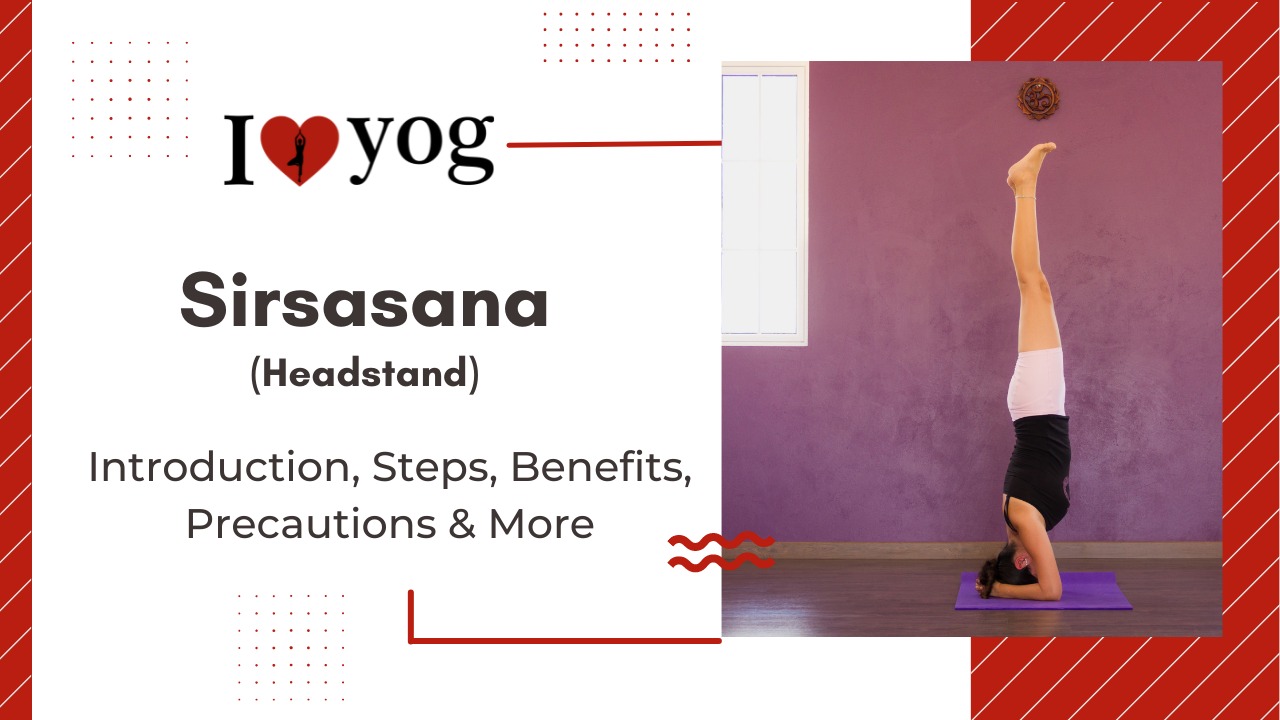What You Need to Know Before Attempting Headstand Asana Preparatory poses:
Follow these preparatory poses before attempting Headstand Asana/Sirsasana: Adho mukha svanasana, Sarvangasana, Virasana, Uttasana
- Yogasana Level – Advanced
- Yogasana Style – Inversion
- Yogasana Repetitions –
- Yogasana Strengthens – Leg, Arm, Spine, Lung
- Yogasana Stretches –
Headstand Asana’s Effecct on the tri dosha
Additionally, inversions such as Shirshasana (Headstand) and Sarvangasana (Shoulder Stand) reduce excess vata since they increase drishti.
Focus and vigilance This helps solve the ‘distracted’ sensation or lack of concentration that vata types frequently report.
Pitta types should avoid inversions such as Shirshasana (Headstand) because their heads are already quite hot.
The majority of inversions, including Shirshasana and Sarvangasana, are highly suggested for kapha types. However, they must be mindful of alignment and adequate positioning so that their excess weight does not place undue strain on the neck joint.
How to Do Headstand Yoga Asana
- While seated in Vajrasana, bend forward with folded forearms lying on the ground and fingers intertwined.
- The head and the hands make a triangle on the floor.
- Place the head’s crown between your crossed fingers.
- Balance the head on the fingers slowly.
- Knees and glutes should be lifted off the floor and straightened.
- Slowly approach the trunk with the feet.
- Prepare to rise from the ground by bending the knees, keeping the heels close to the buttocks, and slowly straightening the hips until the thighs are perpendicular to the floor.
- Slowly straighten the knees and calves until the entire body is in a vertical position, with the feet in a relaxed position.
- Balance the body and hold this position for as long as is comfortable. Advanced yoga practitioners may begin with one minute and gradually increase the duration to at least five minutes.
- Concentrate on the breath and the region of the head.
- When returning, perform the steps in reverse order.
- Fold the legs slowly and return the thighs to the perpendicular position.
- Gradually lower the legs to the ground.
- To regain equilibrium from the inverted position, sit for some time in Shishuasana (Child Pose).
- Let go of the hand position and assume Vajrasana.
- Relax a few minutes in Savasana pose (Corpse Pose).
What Are the Benefits of Headstand Yoga Posture?
- Strengthens the neck and shoulder, abdominal, and spinal muscles
- Alleviates headaches
- Helps cure vertigo
- Contributes to the resolution of kidney, liver, stomach, intestinal, and reproductive system issues
- Aids in blood circulation to the scalp, hence avoiding hair loss, greying of hair, and baldness.
- Contributes to the proper functioning of the pituitary gland, which promotes the proper functioning of all endocrine glands.
- Promotes calm and combats stress
- Increases the body’s vigor.
- Slows and deepens the breath. Slow breathing techniques are related with enhanced brain activity and psychological benefits such as vitality, alertness, and relaxation, according to a study.
What Are the Contraindications and Precautions?
Precautions
- Learn this asana under the supervision of a teacher. Only practice independently when your instructor grants you permission.
- Be patient and proceed gently. The mastery of this asana requires time.
- Perform it close to a wall for stability, particularly if you’re a beginner or have only recently begun performing it.
- Always be aware of the position of your neck.
- Avoid doing so during your menstrual period.
- Your entire body weight is supported by the muscles in your hands, neck, and shoulders. Please see your yoga instructor if you have spondylitides before attempting this asana.
- Individuals with cardiac issues, vertigo, or high blood pressure must also exercise caution.
- Additionally, avoid holding your breath when performing yoga asana.
What Is the Science Behind Headstand Posture/Asana?
Inverting the flow of gravity, headstands allow the skin to hang in the opposite direction. Additionally, the inverted position of a headstand flushes fresh oxygen and blood flow to the face, which can produce a luminous effect on the skin (however, much more research is needed).
Tips For Beginning Headstand Posture/Asana?
If you are new to yoga, you must take heed of the following advice.
- When performing the Sirsasana, be sure to have a certified yoga instructor nearby.
- Balance poses are most effective when performed near a wall or structure for stability. Again, a yoga instructor is the best kind of protection.
- Maintain comfortable head support, such as a pillow or a blanket.
- After completing Step 5, elevate your legs off the floor one at a time. Similarly, descend using one leg at a time.
- At initially, hold the pose for only a few seconds, and then gradually increase your stamina and duration while maintaining your comfort level in mind.
Advanced Changes in Pose
Practice achieving balance and stability with your knees bent and your legs as close as possible to your torso. Keep a neutral spine
Related Yoga Poses/Asanas –
Counter Poses
- Uttanasana (Standing Forward Bend)
- Balasana (Child’s Pose)
Follow poses: Adho mukha svanasana, Balasana
Reference:
https://www.artofliving.org/in-en/yoga/yoga-poses/head-stand-sirsasana


